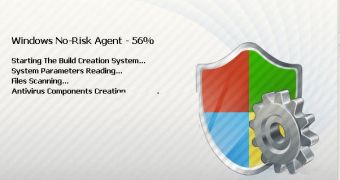No-Risk Agent, AntiHazard Center, Process Director, Guardian Angel, Software Keeper, Problems Stopper, Health Keeper, and No-Risk Center all have one thing in common. They are all fake Windows antiviruses (AVs) that try to fool users into making payments in order to remove phony infections from their computers.
An old Romanian saying comes to mind: a wolf changes its fur, but never its nature. Such as the wolf, these phony Windows antiviruses change their names, but never their malicious purpose.
According to GFI researchers, all the shady applications are alike. First of all, they all come into play by presenting the victim with a fake online scanner that warns about numerous infections and threats that endanger the computer’s safety.
If the user falls into the trap they set and requests the cure for all the infections, a piece of scareware is downloaded, constantly bugging the user with threats that in reality don’t exist.
For the untrained eye, it appears that the only way to get rid of the pesky alerts is by purchasing a so-called threat removal tool that usually costs around $99 (75 EUR). Of course, there is no guarantee that the masterminds of the plot will set the computer free once the amount is paid.
Furthermore, if they see that victims are willing to pay the requested amount of money the crooks may rely on their naivety and keep launching other similar operations.
Internauts are advised to ignore security software that doesn’t come from a trusted source, even if it bears the name of a legitimate vendor.
Those who have already fallen into the traps set by the cybercriminals are advised to rely on real antivirus solutions to remove the threats. Most security firms offer products that can easily get rid of the malicious elements.
In some case, the piece of malware may block computer owners from downloading and installing security software, a situation in which the use of a rescue disk such as the VIPRE Rescue Disk from GFI is recommended.
Note. My Twitter account has been erroneously suspended. While this is sorted out, you can contact me via my author profile.

 14 DAY TRIAL //
14 DAY TRIAL //